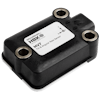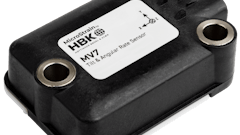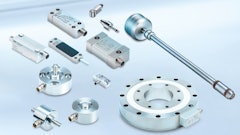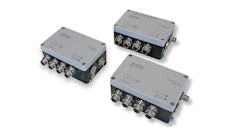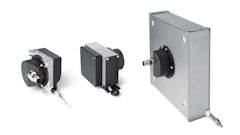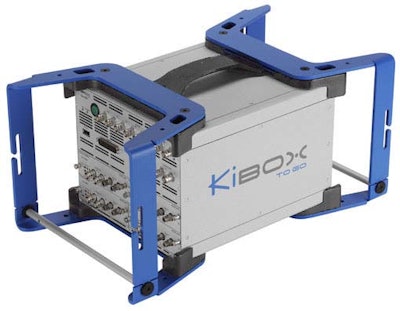
Kistler, a worldwide supplier of precision sensors, systems and instrumentation for the dynamic measurement of pressure, force, torque and acceleration, has announced North American updates to its Type 2893A KiBox To Go system.
The Kistler Type 2893A KiBox To Go is a combustion analysis system which provides for the visualization of parameters within individual engine cylinders. High-performance combustion diagnostic capabilities allow for detailed analysis of engine behavior under actual on-road conditions. The KiBox To Go system is comprised of the KiBox unit with amplifier modules, cylinder pressure sensors and adapters, current probes for injection and ignition timing, a crank angle adapter for crank sensor connection and a 1-Gigabit Ethernet interface. The system includes eight voltage input channels with 16-bit resolution, an input range of -10V to 10V with a sampling rate of 1.25 MHz (MS/s) per channel and selectable low-pass filters of 5, 10, 20 and 30 kHz.
In addition, KiBox To Go Cockpit software upgrade v.1.2.1 is available free to all existing KiBox users and further improves engine combustion measurement and analysis capabilities. The new software package is compatible with both new and existing KiBox systems and offers numerous enhancements, including new combustion parameters, all conveniently and directly integrated into the system. All real-time calculated values are transmitted via the CAN bus for use with CAN hardware supporting the DBC standard. The system can trigger a data capture via the ETAS INCA interface, with the KiBox serving as a fully integrated INCA subsystem. KiBox .open files can also be readily converted into MDF and Ifile formats.
Additional innovations allow for enhanced real-time statistical result calculations of mean, standard deviation and coefficient of variance of IMEP, as well as the mean and standard deviation for the location of 50% mass fraction burned. In addition, a new calculated engine speed signal for cold-start analysis with new encoder and crank position sensor patterns has been added, including multiple non-sequential gaps. Other enhancements include new injection signal classification for gasoline engines, allowing for the calculation of injection timing without pre- or post-injection results. KiBox also supports the calculation of pressure rise rates in the time domain and enhanced engine knock analysis, yielding integral and peak knock values. With these enhancements, KiBox To Go is ideally suited for engine development applications such as ECU rapid prototyping, knock algorithm tuning, cylinder load balancing and indicated engine torque determination.

